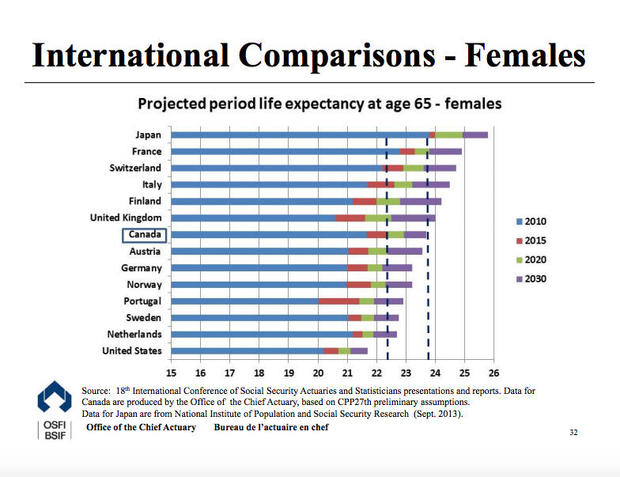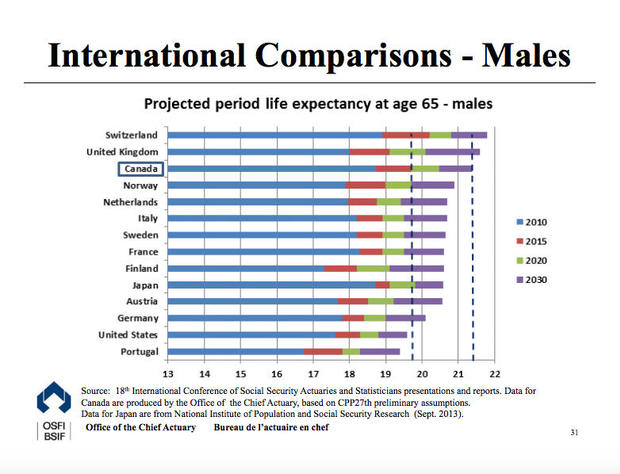How long do U.S. retirees live compared to peers in other countries?
If you’re an American retiree worried about outliving your savings, you may have an (unwanted) edge compared to retirees in other countries: U.S. retirees are expected to live shorter lives on average compared to citizens of most other developed nations. That’s according to an analysis presented at the recent Living to 100 Symposium sponsored by the Society of Actuaries (SOA).
How long a country’s citizens are expected to live is one very important measure of their quality of life. To begin with, living a longer life is generally considered to be better than living a shorter one. But there’s more to the quality of life than just its length. People who live longer are generally healthier than people who don’t, and retirees rank staying healthy as a top factor for happiness.
Unfortunately, the U.S. ranks last or near last--– depending on the group being analyzed -- in one measure of life expectancy presented at the SOA meeting: remaining life expectancy at age 65. The graph below compares women’s remaining life expectancy for 14 developed nations including the U.S.:
The blue bar calculates the remaining years of life for a 65 year-old female assuming that death rates in 2010 remain constant in all future years (i.e., no future improvements in mortality). By this measure, a 65-year-old woman in the U.S. can expect to live a little more than 20 years, ranking second to last, ahead of only Portugal.
The red bar reflects life expectancies calculated by assuming projected improvements in mortality through 2015, the green bar represents projected improvements in mortality through 2020 and the purple bar represents projected improvements in mortality through 2030. By all three of these measures, the U.S ranks dead last.
These life expectancies are calculated by the actuaries who assess each country’s social security or government pension system. Each actuary may have differing views of optimism regarding future improvements in mortality, which is reflected in the projections for 2015, 2020 and 2030.
Nevertheless, the 2010 life expectancies reflect actual mortality rates in 2010 without incorporating any assumptions for improvement, so it’s an appropriate snapshot of life expectancy at that time.
Here’s the same chart for remaining life expectancies for 65 year-old men:
Looking at the blue bar, the remaining life expectancy of a 65-year-old man in the U.S. in 2010 is a little more than 17-1/2 years, ranking third to last, ahead of just Finland and Portugal. The U.S. has the same ranking for the 2015 life expectancies, then falls to second to last for the 2020 and 2030. In this case, Finland overtakes the U.S. because the actuaries for the Finland retirement system assumed higher improvements in mortality than the actuaries for the U.S retirement system did.
At the Living to 100 Symposium, I asked the actuaries to speculate about the why the U.S. had such a poor showing. Their top three reasons were:
- Large income disparities in the U.S.
- More generous retirement benefits in the other countries
- The prevalence of universal health care in the other countries
Given these reasons, it seems unlikely that the U.S. will catch up to the other developed nations any time soon. By this quality of life measure, the U.S. is truly exceptional -- but not for the right reasons.






